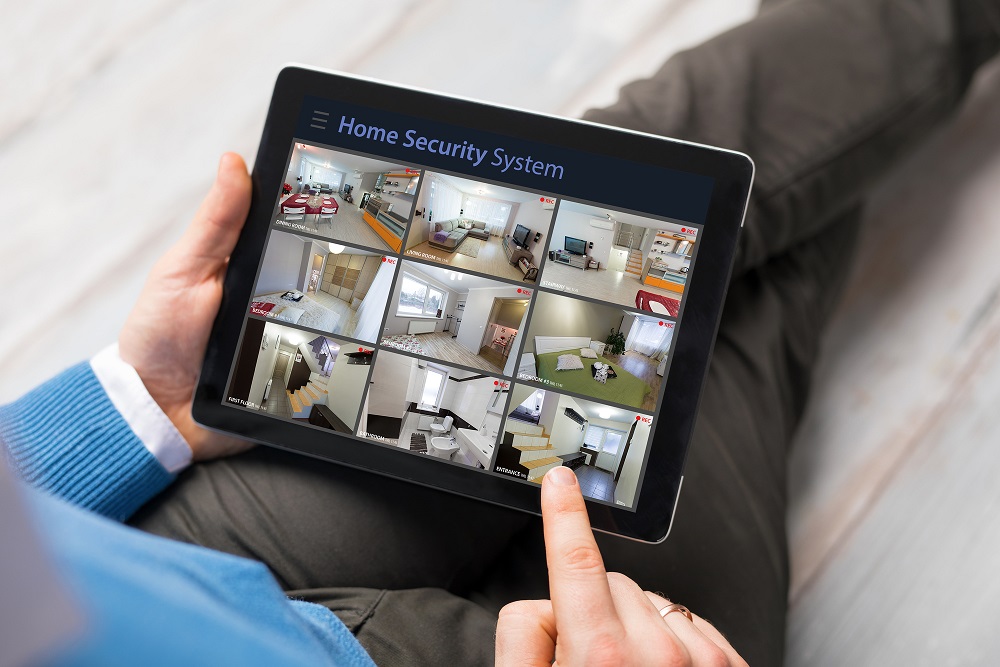Technology has been deeply integrated into people’s lives, including our homes’ security measures. Picture a home that not only provides a sanctuary for you and your loved ones but also actively protects and responds to potential dangers. This is the reality of smart home security.
With the global market for smart home security reaching an impressive value, it’s clear that people are embracing these innovations. However, it’s not just about gadgets; it’s about using technology to create safer spaces where security cameras are smarter, locks are more advanced, and homes are vigilant guardians.
Read on as we explore how technology is redefining safety at home and the latest innovations in smart security.
The Rise Of Smart Home Systems
A smart home system refers to a network of devices and appliances within a home that can communicate and be controlled remotely via a smartphone, tablet, or computer. This technology has paved the way for innovative security solutions that combine real-time monitoring, remote access, and automation.
With the integration of sensors, cameras, and smart locks, homeowners can now keep a watchful eye on their property and loved ones, even when they are miles away.
- Enhanced Surveillance And Monitoring
Smart security is all about making surveillance better. For instance, think about how security cameras have changed. They used to be basic, but now they are smart cameras with high-quality video, night vision, and motion detection features. These cameras aren’t just watching; they’re protecting.
Say a smart camera spots movement by your front door at night. Instead of only recording it, it does something more. Some home security cameras will send you an alert so you can check what’s happening in real time. This shows how technology is redefining how homeowners watch out for problems. They are more involved, and technology helps make their homes safer.
- Smart Motion Sensors
Smart motion sensors are clever devices that can tell if your pets are playing or if there’s a potential intruder. Imagine you have a pet like a cat or a dog at home. Sometimes, regular motion sensors get mixed up by their movements and give you false alarms. But these new smart sensors are designed to handle this better.
For optimal security, it’s recommended that you strategically place these sensors in key areas. For instance, exterior doors and windows are common entry points for burglars, so installing them near these areas is crucial. In case of any unauthorized access attempts, the sensors will promptly alert you.
Moreover, some sensors may even activate lights or draw attention to the intruder. In essence, these sensors act as dutiful guardians that can distinguish between actual threats and everyday occurrences positives, leveraging technology for your safety and peace of mind.
- Keyless Entry And Smart Locks
Smart locks are transforming the traditional lock experience by combining convenience and enhanced security. With these advanced locks, you no longer have to worry about carrying keys or dealing with the hassle of inserting them into a lock. Instead, you can manage and control your home’s lock remotely using a mobile app.
For example, homeowners can effortlessly grant access to family members, friends, or service providers without needing physical keys. Moreover, some smart locks boast features like auto-locking, ensuring the home remains secure, even if residents forget to lock the door behind them.

- Seamless Integration With Automation
The beauty of smart home systems lies in their ability to merge security measures with other home automation functions seamlessly. For instance, an iPad wall mount can serve as a centralized control hub, allowing easy access to security features while keeping devices secure and accessible.
Say the alarm has been triggered. In this case, the system not only sends alerts to the homeowner but may also take additional actions, such as turning on lights, simulating occupancy, and adjusting the thermostat to enhance security and provide the appearance of someone being home.
This quick integration of security and automation can be a powerful deterrent, discouraging would-be intruders from targeting the home.
- Remote Access And Control
Gone are the days of worrying whether you locked the front door or turned off the lights before leaving home. Smart home systems enable homeowners to monitor and control various aspects of their property remotely. This includes arming or disarming the security system, adjusting cameras, and receiving package delivery notifications. Managing home security from a distance provides unparalleled convenience and control.
- Cybersecurity Considerations
While the advantages of smart security systems are evident, addressing potential cybersecurity threats is paramount. As these systems heavily rely on internet connectivity, they could be susceptible to hacking if not adequately protected.
Manufacturers are taking proactive steps to counter potential breaches, such as implementing robust encryption protocols and regular software updates. However, it’s equally crucial for homeowners to follow best practices, like using strong passwords, activating two-factor authentication, and updating their devices to ensure a secure environment.
In Conclusion
The rise of smart home systems has brought a new era of home security. These cutting-edge technologies provide a comprehensive solution that blends advanced surveillance, smart sensors, automation, and remote control. And as these systems evolve, homeowners can look forward to safer and more convenient living spaces.
Nevertheless, it’s crucial to keep cybersecurity in mind and carefully choose the best system for your home. To ensure the utmost effectiveness and peace of mind, seeking professional assistance during the selection and installation process is highly recommended. By taking these precautions and informed steps, you can confidently embrace the promising future of home security.

